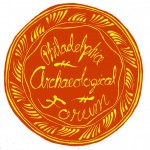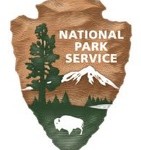(PAST EVENT) Sat. Oct. 20th, 2012–Part 2: Life along the River
<< Back to October Events AND CURRENT EVENT…CLICK HERE…
EXPLORE PHILADEPHIA’S BURIED PAST!
(2012 PAST EVENT) Part 2: Life along the River
(2012 PAST EVENT) When: Saturday, Oct. 20th, 2012 10am-4pm
Where: Independence Seaport Museum
Penn’s Landing, Philadelphia
Print the Program…(pdf)
DIRECTIONS to the Independence Seaport Museum
Join us for “Part 1–Life in the City and Beyond”,(PAST EVENT!!) Sat. Oct. 13th, 2012 9am-3pm, National Constitution Center
10am
Welcome – Douglas Mooney, President, Philadelphia Archaeological Forum
Welcome – Jed Levin, Independence National Historical Park• On the Waterfront: An Overview of Archaeological Discoveries from Philadelphia’s Delaware River Neighborhoods An introduction to the archaeology of the Delaware waterfront, and to the incredible range of archaeological sites and materials still preserved beneath the ground in the city’s River Wards. (Douglas Mooney)
10:30am
• Looking for the West Shipyard Buried beneath a parking lot along the Delaware riverfront lies an important piece of Philadelphia’s history — the city’s original eastern shoreline. During the 17th century, this stretch of waterfront was the site of James West’s shipyard operation. This past summer, an excavation mounted by the Delaware River Waterfront Corporation (DRWC) investigated the shipyard site recovering evidence of 17th and 18th century wood-working waste, hardware, and multiple large timbers. This presentation presents these and other findings. (Tim Mancl)
• The Dyottville Glass Works – “One of the Greatest Curiosities of this Country” This presentation focuses on recent archaeological excavations at the site of the Dyottville Glass Factories in the Kensington-Fishtown neighborhood of the city. This unique glass factory began as the Kensington Glass Works in the late 18th century and continued into the early 20th century producing many well-known glass bottles, flasks, and other glassware distributed widely throughout the country in the 19th century. (George Cress)
11:00am
Artifacts in the Spotlight
Three-Minute ‘Lightening Round’ Talks (LR#1)
• Sparking the Light of Love A small whale oil lamp was recently discovered during excavations along I-95. Called a “sparking lamp”, this item has a romantic history. This presentation will ‘shed some light’ on the role that these lamps played in the courting ritual. (Angela Garra)
• “What’s for Dinner?:” Or, How Do We Find Out What the Delaware Valley Native Americans Ate?
New scientific methods are helping archaeologists to research the long-ago diet of Native Americans living in the Delaware Valley. This research involves testing Native American pottery for any microscopic food particles left during food preparation and eating. This talk will explain the starch grain analysis being conducted on pottery recently discovered along the Delaware River. (Blair Fink)• Come On, Get in the Boat…FISH! Native Americans living along the Delaware River relied on fishing as a main source of food. Netsinkers made from river cobbles are common artifacts associated with fishing, as perishable material, like fishing nets, are rarely preserved in the archaeological record. This talk discusses the effectiveness of this technology, which led to a much greater efficiency in fishing and aquatic animal exploitation. (Allison Allshouse and Ian Roy)
• Seahorses at Dyottville Bottles come in all shapes and sizes–tall, short, round, square… seahorse? Archaeological research at the Dyottville Glassworks factory site in Kensington has recovered a smelly but fascinating seahorse-shaped bottle. This artifact begs several questions: How was this small, complex bottle shape produced? Who would have owned such a container? What were its contents? and What was it used for? (Mary Jachetti)
• Lightening Round #1 — Questions from the Audience/Discussion
11:30am
• Betsy Ross’ Pitchers Two pitchers were found in the bottom of a privy pit (outhouse) that once stood in the backyard behind the house where Betsy Ross spent her last years. The pitchers bear images of War of 1812 naval engagements in which the fledgling U. S. Navy was victorious over the mighty British Navy. What did these pitchers mean to their owner? And did Betsy throw these pitchers away? (Jed Levin)
• “Whereon ye Ould Foart Stood…:” The search for Fort Casimir, New Castle, Delaware Fort Casimir, also known as Fort Trefaldighet, was a 17th-century fortification defending the town of New Amstel, today’s New Castle, Delaware. Situated along the Delaware River, the fort changed hands four times in its short career – built by the Dutch in 1651, captured by the Swedes in 1654, retaken by the Dutch in 1655, and finally seized by the English in 1664. The first attempt to locate the fort occurred in 1986, when the late Edward F. Heite (1939-2005) completed limited archaeological investigations. In the summer of 2012, this location first investigated over 25 years ago was revisited by a team of archeologists using geophysics, GIS, and archaeology. (Peter A. Leach, RPA Wade P. Catts)
12:00pm-1:30pm LUNCH LUNCH LUNCH
1:30pm Welcome
• Revisiting the Wolf Walk: Giving Life to Native American Place Names Through Archaeological Investigations Native American place names retain no greater significance than in Pennsylvania. Not only has industrialization and urbanization in the city of Philadelphia led to dramatic changes to the natural landscape, most Native American names for specific locations or landscape features within the city have been gradually replaced or forgotten over the past 400 years. This presentation will discuss how ongoing archaeological investigations along I-95 correlate to Lenape places names, such as Tumanaranaming and Shackamaxon, along the Delaware River. (Jenifer Rankin)
• Legends of Philadelphia’s Lost Waterfront: Caves and Stairwells along the Delaware Did you know that early Philadelphia Quaker settlers once lived in caves along west bank of the Delaware River? Or that William Penn directed a series of public stairs to be built along the bank to facilitate easy access to the river? Harry Kyriakodis will discuss this and other research covered in his book, Philadelphia’s Lost Waterfront (2011, The History Press), which surveys the city’s central Delaware waterfront story over time, from Penn’s day to the present, including the conflict of land use (residential vs. commercial vs. recreational vs. transportational) and the devastating impact on the historic and cultural landscape by the construction of I-95. (Harry Kyriakodis)
• Getting to know the Philadelphia Archaeology Legacy: Living in the media, a sneak preview This presentation will introduce a self-guided GPS Augmented Reality walking tour of Philadelphia Archaeology sites developed by Drexel University Digital Media faculty and students. Four sites will be sneak previewed –the Dexter House site, The Dyottville Factory Glass site, the Remer House site and the Hope Farm site. The audience will be invited to take out their smart phones to download the free Augmented Reality Program Junaio available at http://www.junaio.com/. Once loaded, the audience will be invited to view the Dexter House archaeology project located on the grounds of the NCC as they exit the day’s event. They will also be invited to view the other 3 sites at their convenience, additional sites coming soon! (Glen Muschio, Mark Petrovich, Jason Kirk, Joe Tomasso)
2:15pm
Artifacts in the Spotlight
Three-Minute ‘Lightening Round’ Talks (LR#2)
• The Atlatl–A Superior Spear Throwing Accessory Long before the city existed, Native Americans hunted in the lower Delaware Valley using spears. An atlatl (or spear throwing device) helped these hunters to increase the accuracy of their aim, the distance of their throw, and the impact of the spear. Atlatl’s helped Native peoples feed their families as far back as 4500 years ago — and now they aid modern Philadelphians in understanding the creators of this innovative tool. (Amy Litterer)
• Pampered Whiskers During the 19th Century, civilians picked up on a military trend towards growing facial hair as a statement of “manhood.” Men paid much attention to facial grooming and often curled, dyed, and waxed their mustaches, in keeping with Victorian fashion. The porcelain mustache mug recovered from a household privy along a corridor of I-95 is an example of an everyday object, modified to suit the modern man’s needs. (Erin Broadhurst)
• One in a Thousand Recovered during excavations in preparation for the I-95 expansion in Philadelphia, Archeologists recently excavated a piece of window glass etched with a name during an excavation along I-95. The unusual artifact was discovered among more than a thousand pieces of plain window glass, truly making it ‘one in a thousand’ (or more). Come hear some theories about the elusive history of name-etching and see if you can come up your own ideas about why this permanent autograph was left to be discovered centuries later. (Carolyn Horlacher)
• Glass Beads: Signs of European/Native American Contact and Trade along the Delaware Glass beads are one of the earliest European artifacts found on Native American sites. Native peoples attributed cultural and aesthetic meanings to these new items (just as we do today with the materials of the modern world). Glass beads became commonly traded goods and then their popularity dropped away. This talk presents two examples of this ‘contact period’ artifact which were recently discovered during excavations along the Philadelphia waterfront. (Kristin Swanton)
• Lightening Round #3 Questions from the Audience/Discussion
2:45pm
• Rails Across the Delaware: The Port Richmond Float Bridges The Port Richmond float bridges, a set of
enigmatic structures in Port Richmond at the foot of Allegheny Avenue, were used by the Reading Railroad to
load freight cars on barges, providing vital links between railroads on either side of the river, and between
steamships and the railroad. Long abandoned, the Port Richmond float bridges are a unique resource, and
should be recorded before they decay or are demolished. (Lauren J. Cook)• Urban Re-perfection and the Destruction of the Past: Seventies and Eighties Archaeology in Philadelphia This is the tale of a young classical archaeologist changing his career goals as he discovers the lost underground treasures of a modern American metropolis forty years ago. There are notable triumphs and sadly, many tragedies in this survey of the archaeological researchers and archaeological sites of seventies and eighties -archaeology in Philadelphia. (Dave Orr)
Ask the archaeologists – Questions and Answers about Philly Area Archaeology
4:00pm End of Program
Co-Sponsored by the Philadelphia Archaeological Forum and Independence National Historical Park
HOSTED BY THE INDEPENDENCE SEAPORT MUSEUM
October is Pennsylvania Archaeology Month!
Join us for Part 1–Life in the City and Beyond , Sat. Oct. 13th, 9am-3pm, National Constitution Center
(525 Arch Street, Philadelphia)
by admin


